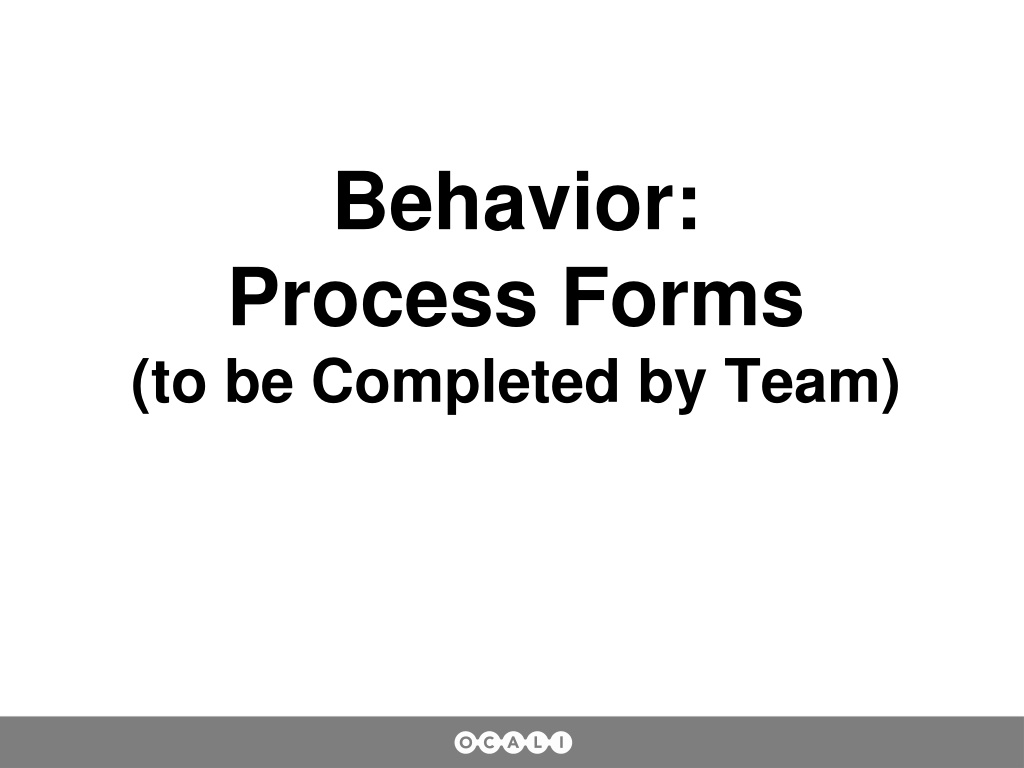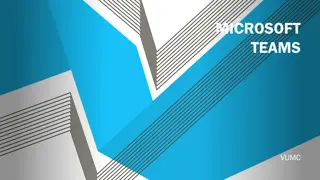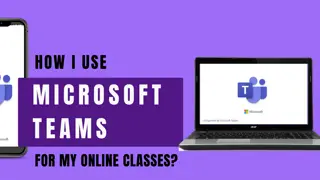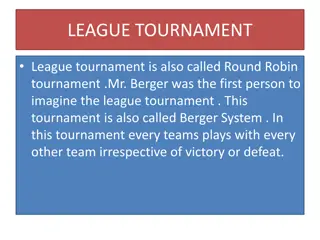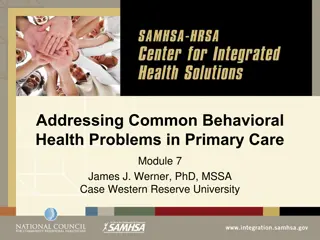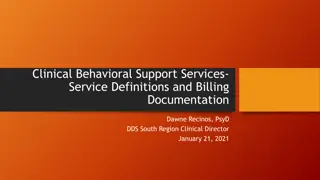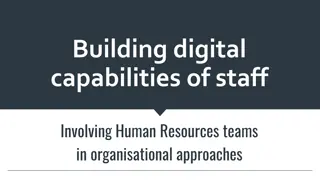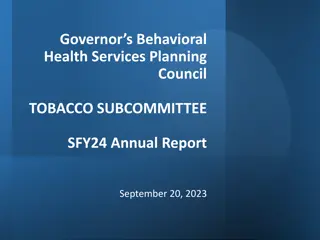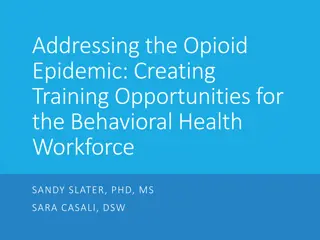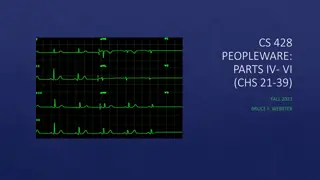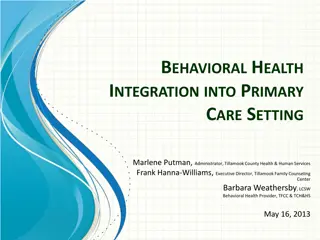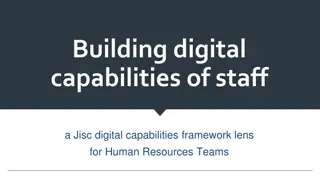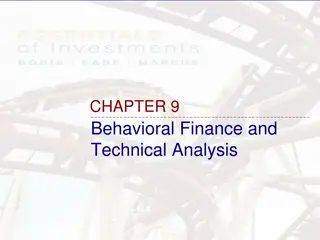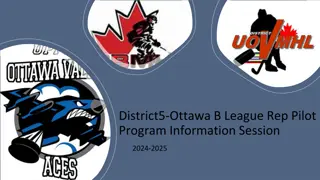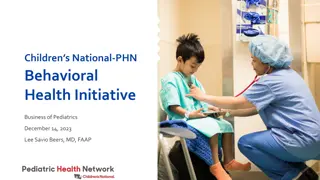Understanding and Addressing Behavioral Challenges in Teams
This comprehensive guide covers various aspects of behavior analysis in teams, including antecedents, consequences, individual challenges, and strategies to address learning and skill development. It also delves into social, emotional, and communication challenges, as well as factors contributing to specific behaviors and their functions.
Uploaded on Sep 15, 2024 | 0 Views
Download Presentation

Please find below an Image/Link to download the presentation.
The content on the website is provided AS IS for your information and personal use only. It may not be sold, licensed, or shared on other websites without obtaining consent from the author. Download presentation by click this link. If you encounter any issues during the download, it is possible that the publisher has removed the file from their server.
E N D
Presentation Transcript
Behavior: Process Forms (to be Completed by Team)
Antecedents Consequences BEHAVIOR OF CONCERN Triggers Setting Events Factors that Increase the Behavior (Reinforcement)
Data and Your Individual Behavior What are you going to measure? And when? What would be the best way to measure? Who is going to create the data sheet? Who will be responsible to track the data? Graph the data? When will the team meet to review data?
Social, Emotional and Communication Challenges Social, Emotional and Communication Challenges Social, Emotional and Communication Challenges Sensory/Biolo gical Sensitivities and Preferences Impact of Medical Concerns Learning Challenges and Uneven Skill Development Difficult to Motivate Narrow Areas of Interest Environmental Mismatch and Change
Individual Challenges Related to Behavior (To Help Identify Antecedents and Consequences) Individual Strengths Related to Behavior (To Help Identify Strategies) 3 1 Learning Challenges and Uneven Skill Development Learning and Skill Development Environmental Matches Environmental Mismatch and Change Sensory/Biological Sensitivities and Preferences Impact of Medical Concerns Sensory/Biolog ical Preferences Successful Social, & Communication Social, Emotional &Communication Challenges Motivation & Interests Difficult to Motivate & Narrow Interests 2 4 What are the Underlying Contributors to and Function of the Behavior (THE WHY WORKSHEET ) WHAT S MISSING? When ___________ is faced with the stressors of these setting events ______________________________________ _______________________________________________________________________________________________ Behaviors are indications of a missing or needed skill that will address issues identified in Step 2. What skills does the individual need (that were NOT identified in Step 3) in order to change the behavior of concern? (Example: Social, Communication, Academic, Coping, Emotional Regulation, Self Help, etc.) and these immediate triggers _______________________________________________________________________ he/she engages in the identified behavior (above) which results in this type of reinforcing consequence ______________________________________________________________________________________________. These identified factors result in the behavior serving the following function(s) or benefit(s) for the individual (1 or more): A Sensory Experience or Physiologic Benefit : __________________________________________ A Desired Object , Person, Activity or Experience: ______________________________ An Escape from an undesirable Task, Activity, Person, etc.: ___________________ A Way to Communicate: _______________________________________________________________ Other Functions:
Worksheet for Step 2 THE WHY WORKHEET: What is Causing the Behavior? Why Does it Continue? Review what you have discovered When _____________ is faced with these Setting Events And these Immediate Triggers S/he engages in this Behavior: Which results in these Reinforcing Consequences Function of the Behavior. Based on the information of the above setting events, triggers and consequences, _______________ receives the following benefit(s) or function(s) from the behavior (select one or more): What is Obtained? Obtains a Desired Object , Person, Activity or Experience Why does s/he want this? What is the sensory experience/benefit? Sensory Experience or Physiologic Benefit What is escaped? Escapes an undesirable Task, Activity, Person or experience: Why does s/he wish to escape this? What is he/she communicating? Provides Communication Other
Begin with Success: Recognize the Individual s Strengths, Preferences, Interests Communication COPING SKILLS Physical Attributes Academically related areas Functional Skills Self Monitoring and Self Regulation of Sensory Needs Work Habits Personality Motivators and Reinforcers Self Social Determination Skills Competencies
5 5 What REPLACEMENT skill needs to be taught to and used by the Individual? This skill will serve the same FUNCTION as the behavior of concern (Step 2 and 4) What RELATED Skills should be taught to improve the Individual s access to and participation in LRE? (Step 4) Interventions to Address Behavior 6 Plan to Teach and Reinforce REPLACEMENT Skills Plan to Teach and Reinforce RELATED Skills INTERVENTION. Will a specific intervention(s) be used to teach the new skill? (EBP) INTERVENTION. Will a specific intervention(s) be used to teach teach the new skill? (EBP) LEARNING STYLE. What strategies or methods will be used to improve learning and skill development that match the person s learning style and need (Step 3) LEARNING STYLE. What strategies or methods will be used to improve learning and skill development that match the person s learning style and need (Step 3) ENVIRONMENTAL MODIFICATIONS. What modifications to the environment (Step 1 and 3) will be necessary to achieve an environment that is supportive of learning new skills and may also reduce setting events or triggers (Step 2)? Modifications include modifications in the way others act/ react. ENVIRONMENTAL MODIFICATIONS. What modifications to the environment (Step 1 and 3) will be necessary to achieve an environment that is supportive of learning new skills and may also reduce setting events or triggers (Step 2)? Modifications include modifications in the way others act and react. SENSORY. Will the individual require sensory/biological adaptations or interventions (Step 1&3) to promote learning and using the new skill or to reduce setting events and triggers (Step 2) ? SENSORY. Will the individual require sensory/biological adaptations or interventions (Step 1&3) to promote learning and using the new skill or to reduce setting events and triggers (Step 2) ? SOCIAL AND COMMUNICATION. What social-emotional and communication supports (Step 1 and 3) will be needed? How will instruction in these areas be provided to promote learning the replacement skill or to reduce setting events and triggers (Step 2)? Interventions and Supports include modifications in the way others communicate to the perosn. SOCIAL AND COMMUNICATION. What social-emotional and communication supports (Step 1 and 3) will be needed? How will instruction in these areas be provided to promote learning the replacement skill or to reduce setting events and triggers (Step 2)? Interventions and Supports include modifications in the way others communicate to the person. REINFORCE. Ways to add Motivation and Reinforcement (Step 3) REINFORCE. Ways to add Motivation and Reinforcement (Step 3) DATA. How will progress towards the new skill be measured (Data worksheet)? DATA. How will progress towards the new skill be measured (Data worksheet)?
Reinforcement and Your Individual List what is reinforcing to your individual. If you aren t sure, what are you going to do to find out? What type of reinforcement would work best for the individual and targeted skills? Consider intrinsic/extrinsic motivators. What will be the schedules of reinforcement: -how often -how much -who is giving -how will you record data about it -when/how will you review, update, revise
